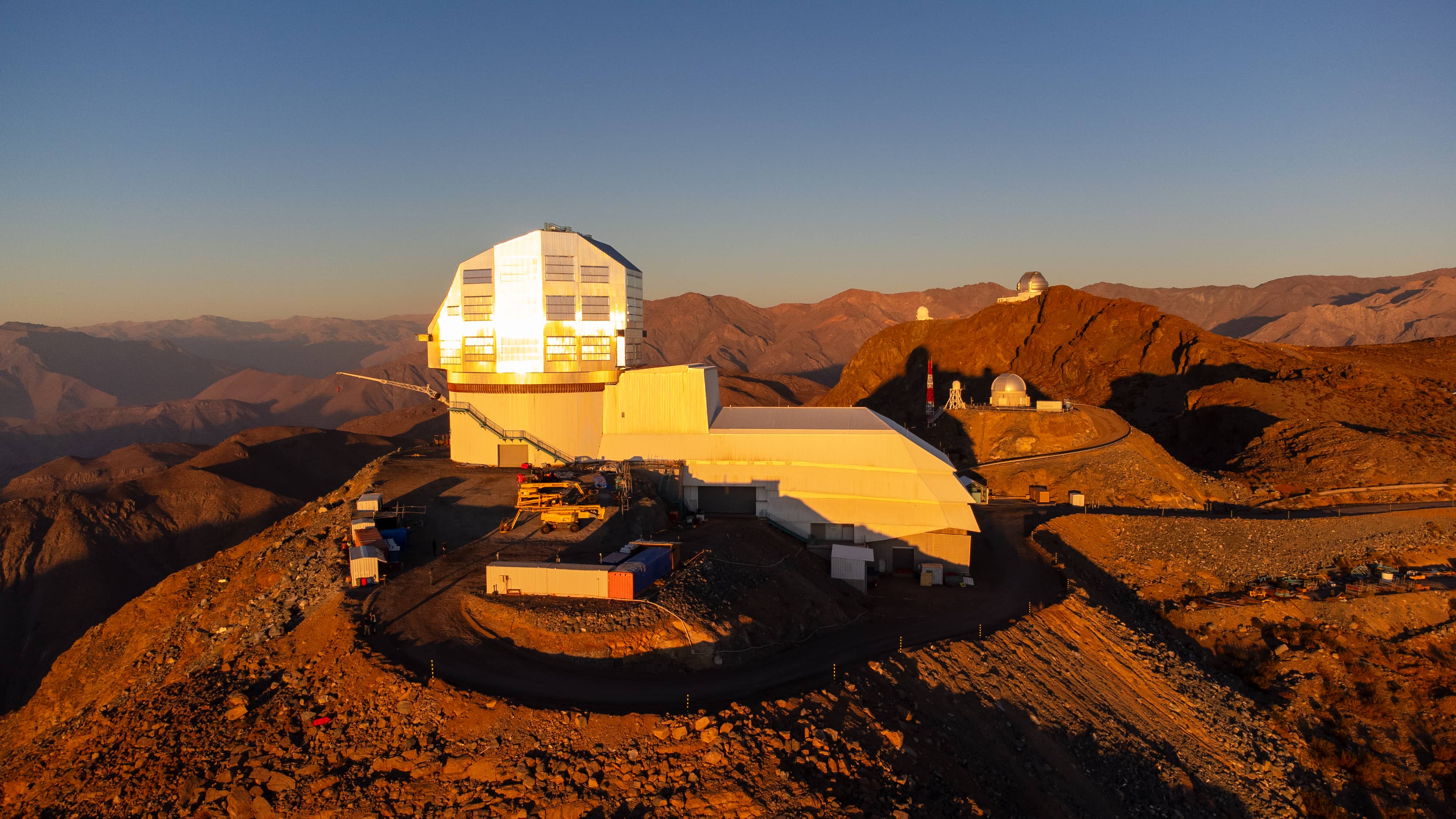On my watch – Astrophysicist Michele Bannister Introduces the Wonders of the Vera C. Rubin Observatory

By Anne W. Semmes
The Vera C. Rubin Observatory is the final feature of five impressive but less-known astronomy-focused projects cited as “extremely important” by my New Zealand based astronomer stepbrother Michael Snowden. First was the IceCube Neutrino Observatory, second was NASA’s Transiting Exoplanet Survey Satellite (TESS), third was GAIA, the Global Astrometric Interferometer for Astrophysics spacecraft/satellite, and fourth, LIGO for the Laser Interferometer Gravitational-Wave Observatory.
Prize-winning astrophysicist Dr. Michele Bannister is excited to be part of the research team to be involved in the discoveries to come from the most powerful camera ever placed in an observatory being built high up in the Chilean Andes called the Vera C. Rubin Observatory. Michele is based in her and Michael Snowden’s hometown of Christchurch, New Zealand as University of Canterbury Senior Lecturer. In her late 30’s, she’s long had a passion for finding “small worlds in the solar system, the leftover building blocks from the formation of the solar system.”
Vera Rubin did not live to see herself so honored for the discoveries she made. She died in 2016, age 88. Rubin, who was American, also had her eyes on the solar system. In so doing, Rubin and her collaborators first brought to light evidence of the existence of dark matter from “observing the overly rapid rotations of galaxies.” There are those [men] who’ve won a Nobel Prize for learning about that other phenomenon of dark energy. But Vera Rubin, alas, did not win one. Yet, “Of all the great advances in physics during the 20th century,” wrote Harvard physicist Lisa Randall soon after Rubin’s death, surely Rubin’s discovery was “deserving of the world’s preeminent award in the field, the Nobel Prize.” Hence the
Vera Rubin Observatory.
The wondrous Rubin telescope
Michele is quick to share the wonders of the new telescope that she says is “primarily funded by your National Science Foundation and Department of Energy, but we have in-kind contributions from major scientific groups around the world.” She describes the telescope’s power as having “the breadth and depth that it’s able to see in a short space of time.” Comparatively, “Hubble is very good at looking at a very high resolution at something that’s very faint, but at a tiny area in the sky… Whereas Rubin is covering multiple areas in any single image it takes. So it’s got this huge, wide field of view. And it doesn’t go as deep as Hubble can, but it can go to a depth in that broad field of view that is much deeper than any other of the ground-based survey telescopes that we currently have. So it goes about three orders of magnitude deeper on a regular basis.” She cites the James Webb telescope as similar to the Hubble in its reach.
“It looks very different to other telescopes you might’ve seen,” she continues. With “a more traditional ground-based telescope, the arrangements look quite stretched out, that kind of long telescope tube… Rubin’s is compact, because it needs these ‘fast optics’ to get the light through and still have that big collecting area. It’s an 8.4-meter mirror. But it needs to collect that light quickly. And that means it can scan the sky quickly. So basically every 30 seconds or so, it’s going to be imaging…then nudging over, looking at the next piece of sky, nudging over, looking at the next piece of sky. And this means it can cover the whole Southern sky in the Southern Hemisphere every three nights or so.”
Michele’s collaborative team
So what are Michele and her collaborative team of some 40 scientists from around the world presently doing? “We are going to check that everything comes through the system correctly, but First Light [the kick-off in 2025] is when things can start…Then there’s a couple of months of commissioning, ensuring that everything works the way we hope it should. And the start of survey operations is a couple of months after that. So then it surveys the whole sky for a decade!”
And importantly for “mapping out the small bodies in the solar system,” Michele says, this telescope is equipped with the software able to make this extraordinary survey accessible. “There’s a team of people who have been working on that for nearly two decades, to make sure that software will look at all of the points of light in the image, then of all the points in the image taken a little later to be able to link up anything that’s moving in such a way that we can say, “This is where it lives in the solar system. This is the orbital path it’s taking.”
So, of all the hundreds of scientists who will reportedly be working with those images, what will be Michele’s focus? “The part I’ve been looking at is for the interstellar objects that Rubin’s going to detect,” she tells. “It’ll find individual worlds that are coming through the solar system. So small things like asteroids and comets. Once Rubin finds them, it’ll tell us where they are, and then we can use other telescopes to go and look at those new discoveries and see what they’re made of, what their composition is, what their properties are, and use that to tell us more about the population as a whole.
Interstellar objects

“Those interstellar objects,” she continues, “sample all of the planetary history that’s taken place all around the galaxy. And so I’ve been working a lot on the theoretical models, the last couple of years, of what this population’s going to be like…We only get to see the planets that are also going around the sun with us, but the delight of interstellar objects is we have these little postcards, effectively, that have been sent to us by other planetary systems, and we get a chance to understand what things are like over there.”
She dives deeper. “The theory that we have at the moment suggests that every system that has planets is going to have made trillions of asteroids and comets as well, and that most of those are going to be scattered from that system to head out and wander the galaxy. So they’re no longer bound to their star. They’re free floating. And so these are all going around the galaxy just as much as stars and dark matter and the gas of the interstellar medium. And so our solar system just happens to be going around the galaxy too. So a whole lot of these are wandering past on a regular basis. So when we have Rubin, we’ll be able to see this whole observable volume of the solar system just suddenly open up, that we can see the things that are with us that we didn’t know were there.”
Speaking of asteroids, hasn’t there been an asteroid named for you: Asteroid 10463 Bannister? “It’s a lovely honor,” she says. “Those of us who work in studying the small bodies of the solar system, sometimes that work is recognized with an asteroid naming, so I was very touched, actually, to see the asteroid that they chose for me was one discovered by another woman astronomer back in the 80s, and that it was discovered using a telescope that was at the observatory where I did my Ph. D in Australia.”
Those intrusive manmade satellites
So, the only bad news that hovers over the Vera Rubins telescope is the steadily growing and obstructive number of satellites Michele tells. “There are now 7,000. “There is a future in which we will look at the sky and just see this moving net of dots of light, because it’s not just one company -we’re up to about 30 companies that are now pushing these very large satellite constellations, mega constellations of thousands to tens of thousands of satellites, each to achieve overlapping commercial objectives.”
She also notes, “We’re still at the stage where the launches have primarily been from the U.S. and that’s where the regulatory effort really needs to begin. There are steps in place that are starting to develop and some companies that are starting to make efforts, but it’s by no means coherent across the industry yet.” She adds her frustration to see, “at a very deep level yet another area where industrialization is happening in such a way that it impacts the environment. People end up trying to create something that they advance as being a good, but they do so in a way that causes active harm.”
“It’s been really hard,” she concludes, “for me as someone who has loved space flight my entire life, who works on space missions, seeing the very companies that help create that aspirational narrative of how much exploration and understanding the universe can be, then turn around and go, ‘Well, we can also destroy that,’ for the sake of commercial gain.”








